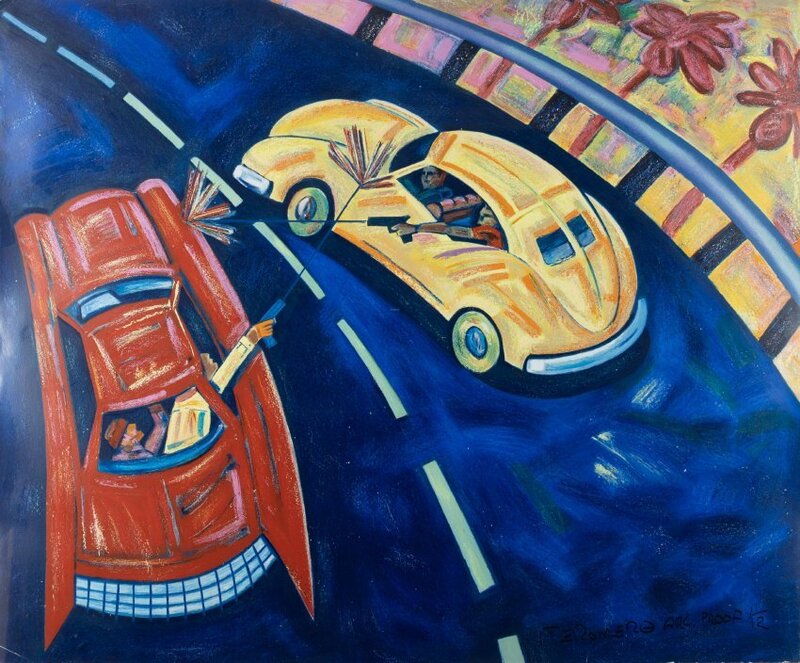Title
Freeway Wars
Creator
Website
Description
Serigraph on paper, 39.75 in. x 46 in. Chicano artist Frank Romero has explored numerous subjects in his art, especially the car culture of Los Angeles. He portrays classic cars, trucks, lowriders, and muscle cars. Romero is also known for depicting car crashes on freeways and shootings from cars, as seen in this print. Rivals shoot at each other from their cars, while speeding recklessly around a curve in the freeway. Frank Romero was born in 1941 in East Los Angeles, California; he attended Otis College of Art and California State University. Romero began painting when he was five years old. During the height of the Chicano Movement for civil rights in the early 1970s, Romero identified himself as a Chicano. He began working with three other Chicano artists in what was known as Los Four. The art collective used murals, graffiti, and street theater to protest America’s military involvement in Vietnam and Southeast Asia. His most famous artwork, The Death of Rubén Salazar (1986), documents the killing of Chicano journalist Rubén Salazar. He was fatally struck by a canister of tear gas shot into the Silver Dollar Bar on August 29, 1970, by LA County Sheriffs after a rally against the Vietnam War. “I grew up in East Los Angeles, and we always had problems and feared the sheriff’s department because their policy was to come down hard on minorities,” says Romero. Commenting on his use of bright, bold colors in his art, “The part of me that’s Mexican or Latino, I think of Mexicans, like hot vibrant colors. You see that in the way the houses are painted in Mexico and East LA.” Romero has been a dedicated member of the Chicano art community of Los Angeles for forty years.
Subject
Date
Contributor
Access Rights
Mexic-Arte Museum has created and maintains websites and other digital properties to support its mission to enrich the community through education programs, exhibitions, and interpretations of the collection. These Websites include https://mexic-artemuseum.org/ and https://mexicartemuseum.pastperfectonline.com/. This does not mean that Mexic-Arte Museum owns each component of the compilation, some of which may be owned by others and used with their permission or used in accordance with applicable law (e.g., fair use). Mexic-Arte Museum is committed to protecting the intellectual property rights of visual and performing artists and others who hold copyright. Most items in the collection are protected by copyright and/or related rights. Private study, educational, and non-commercial use of digital images from our websites is permitted, with attribution to the Mexic-Arte Museum. Commercial use of any materials on the Mexic-Arte Museum website is expressly forbidden. Users who wish to obtain permission for publication, display, distribution, or other uses of these materials should contact the rights holder(s).
